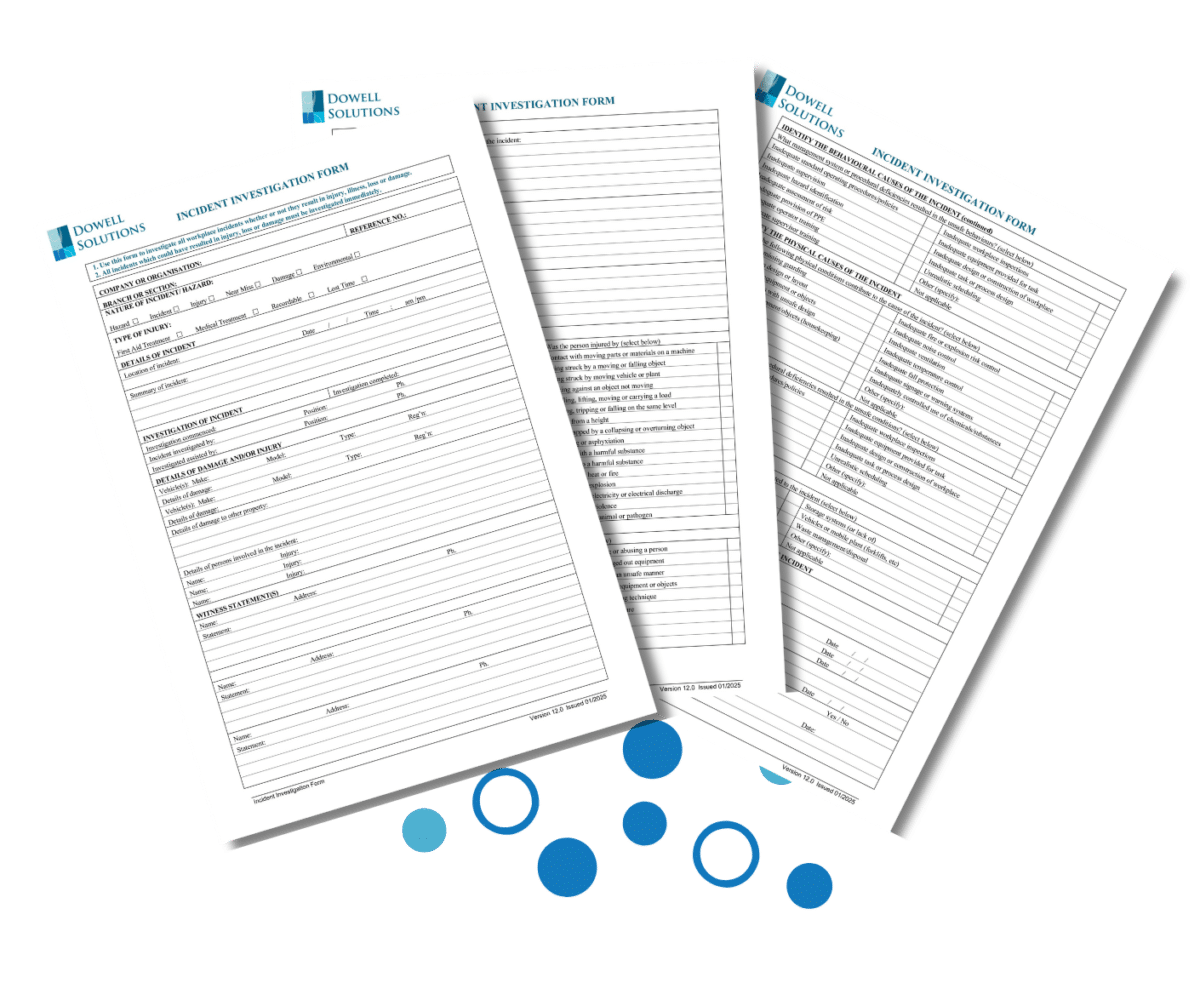When a safety incident occurs in the workplace, how you respond can make all the difference.
Effective safety incident investigations are essential for identifying root causes, preventing future occurrences, and meeting your WHS obligations.
In this guide, we’ll walk you through each step to ensure your investigations are thorough, professional, and impactful. Plus, we’ve included a free Safety Incident Investigation Form to make the process even easier.

Why Conducting Safety Incident Investigations is Crucial
Conducting safety incident investigations isn’t just about following the rules—it’s about prioritising your people and fostering a safer workplace. Here’s why they’re vital:
- Uncover Root Causes: Identifying what went wrong helps you address the real issues behind an incident.
- Meet WHS Compliance: Adhering to legal requirements ensures you’re staying on top of workplace safety regulations.
- Prevent Future Incidents: Effective investigations lead to actionable steps that create a safer environment for everyone.
Preparing for the Investigation
Preparation is key to ensuring a smooth and thorough investigation. Before you begin:
- Assemble the Right Team: Involve individuals who understand the workplace and incident context, such as supervisors, WHS officers, or external consultants if needed.
- Gather Initial Information: Collect incident reports, photos, and any immediate witness accounts to get an overview of the situation.
- Foster a No-Blame Approach: Encourage open communication by reassuring your team that the goal is to improve safety, not assign blame.
Every investigation is an opportunity for growth and improvement!
Step-by-Step Guide to Investigating Safety Incidents
Let’s break the investigation process into manageable steps:
Step 1: Secure the Scene
- Ensure the area is safe for everyone involved.
- Document the scene using photos, videos, or sketches to capture conditions as they were immediately after the incident.
Step 2: Collect Evidence
- Physical Evidence: Inspect equipment, tools, and the environment.
- Documentary Evidence: Review policies, procedures, and training records.
- Testimonial Evidence: Conduct interviews with witnesses, using open-ended questions and active listening.
Step 3: Identify Contributing Factors
- Use techniques like the “5 Whys” method to drill down to the root cause.
- Consider all potential factors: human error, environmental conditions, and procedural gaps.
Step 4: Analyse and Interpret Findings
- Categorise causes into immediate (e.g., equipment failure) and underlying (e.g., insufficient maintenance) issues.
- Develop actionable recommendations based on your analysis.
Step 5: Document the Investigation
- Create a detailed report that includes:
- A summary of the incident.
- Evidence collected.
- Root causes identified.
- Recommended corrective actions.
- Ensure your report meets WHS compliance standards.
Taking Action After the Investigation
An investigation’s value lies in the actions you take afterward:
- Implement Corrective Actions: Address root causes to prevent similar incidents.
- Communicate Findings: Share improvements with your team to build trust and transparency.
- Follow Up: Monitor the effectiveness of the measures put in place.
Common Mistakes to Avoid During Safety Incident Investigations
Avoid these pitfalls to ensure your investigation is effective:
- Rushing Through the Process: Take time to gather comprehensive information.
- Excluding Key People: Involve those with relevant knowledge and experience.
- Neglecting Follow-Up: Ensure corrective actions are monitored and adjusted as needed.
Free Resource: Safety Incident Investigation Form
To simplify your process, we’ve created a Safety Incident Investigation Form. This downloadable template is designed to:
- Help you capture essential details.
- Ensure compliance with WHS requirements.
- Save time and reduce stress during investigations.
Final Thoughts
Conducting effective safety incident investigations doesn’t have to be overwhelming. By following these steps and using our free investigation form, you can ensure your process is thorough, compliant, and focused on creating a safer workplace. Remember, every investigation is an opportunity for growth and improvement.

ABOUT THE Author - Kylie Dowell
Kylie Dowell is a seasoned WHS consultant, trainer, and safety advocate with over 25 years of experience helping Australian businesses create safer, compliant workplaces.
Through her partnership with TEAMS, an accredited Registered Training Organisation, Kylie delivers a wide range of training up to Advanced Diploma level, empowering businesses with the knowledge and skills to manage safety effectively.
As an approved trainer for Health and Safety Representative (HSR) courses by three Safety Regulators, Kylie has guided countless organisations in building stronger safety cultures and fostering healthier work environments.
Specialising in practical and effective safety solutions, she works closely with small and medium-sized businesses to simplify complex WHS requirements, making safety approachable and achievable.
When she’s not delivering high-quality training or conducting ISO 45001-certified audits, Kylie enjoys collaborating with her clients to design tailored workshops and strategies that suit their unique needs.
Ready to make safety simpler? Get in touch with Kylie today for personalised support.

